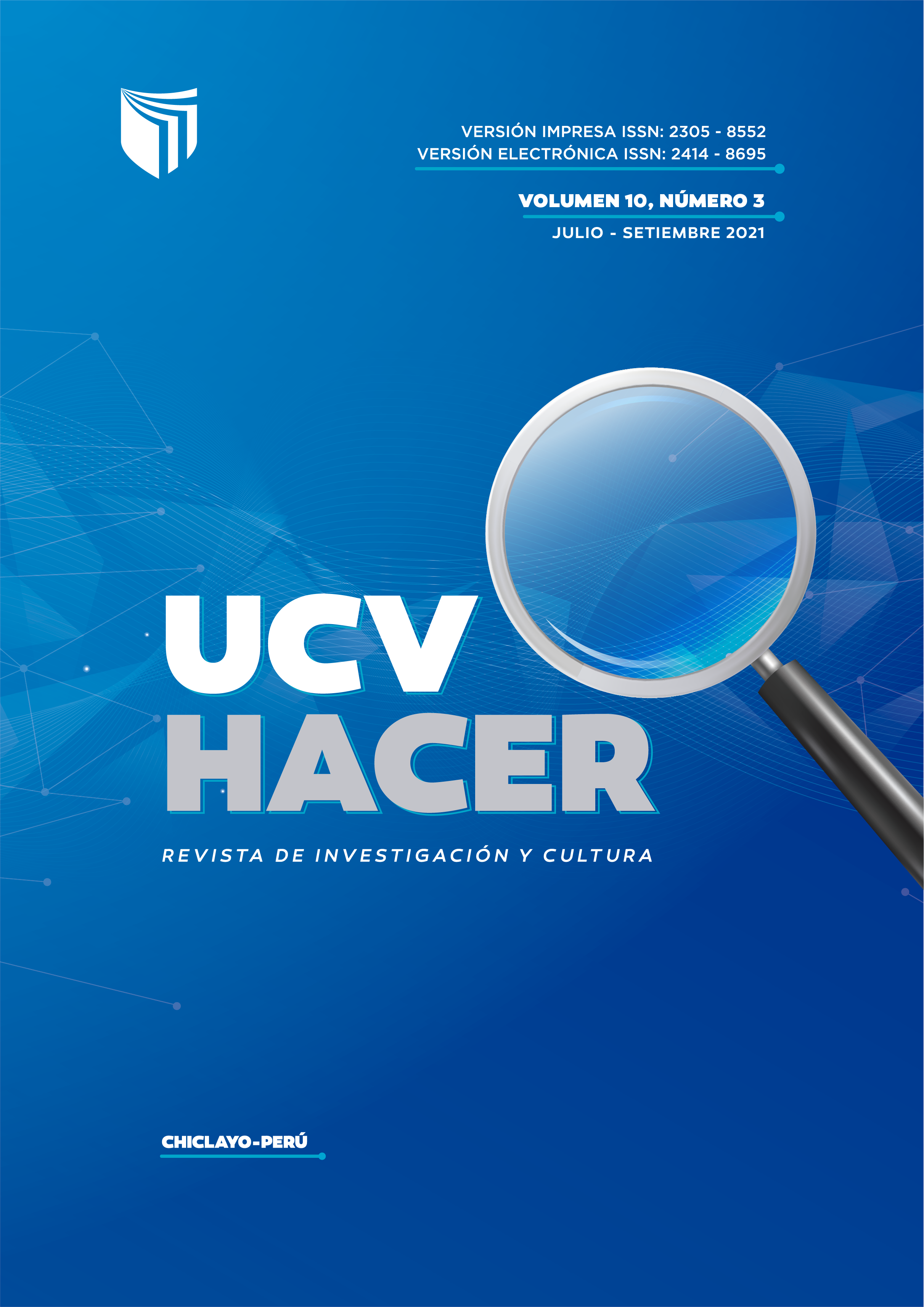Architect competencies according to requirements of the Piura Region
DOI:
https://doi.org/10.18050/RevUCVHACER.v10n3a5Keywords:
Occupational qualifications, Architecture, Education and employment, Architecture educationAbstract
The objective of this study was to establish the specific competences of the architect required by the business market of the Piura region, for which a descriptive, applied, non-experimental, cross-sectional design was carried out; In it, active and existing companies in the construction and real estate sector of the Piura region were considered as the study population and the sample was 219 surveys collected through a two-stage stratified sampling. The results showed that the specific skills of the architect required by the business market of the Piura region coincide with 23 of the 26 identified in the architect's profile for Latin America, likewise, the required knowledge is grouped into 27 thematic lines, the skills of the architect in 19 categories, the attitudes involve six values and six specific attitudes, concluding that the competency approach allows training professionals with an integral vision, but this does not imply that it is static, since considering the development of societies, needs change due to What this study can be applied in each of the regions, where the professional architecture career is offered, since it will allow updating the professional training program, considering the real requirements that society demands in the context where these are directly developed. professionals.
References
Alles, M. (2008), Desarrollo del Talento Humano (2° ed.). Editorial Granica. Argentina.
Beneitone, P., González, J., y Wagenaar, R. (2014). Informe Final del Proyecto Tuning América Latina: Reflexiones y perspectivas de la Educación Superior en América Latina. Universidad de Deusto. Bilbao, España. https://dialnet.unirioja.es/servlet/libro?codigo=732705
Bernal, C. (2010). Metodología de la Investigación. (Tercera edición). Pearson Educación. Colombia.
Carreras a Distancia (2020). Las 10 profesiones más solicitadas en el 2020. https://www.carrerasadistancia.com.pe/informática-e-informacion/articulo-profesiones-mas-buscadas.
Condori, F., y Chávez, M., (2017). Programa de actualización en sistemas constructivos desde un enfoque por competencias para fortalecer el ejercicio profesional del arquitecto en La Paz-Bolivia. https://repositorio.umsa.bo/xmlui/handle/123456789/14727
Espinal, A., De la Cruz, C. Nicodemo, D. y Serrano, M. (2015). Valoración de las competencias implicadas en la formación del arquitecto en la Pontificia Universidad Católica Madre y Maestra. Cuaderno de Pedagogía Universitaria, 12 (23), 6-28. https://doi.org/10.29197/cpu.v12i23.226
Gómez, J. (2015). Las competencias profesionales. Revista Mexicana de Anestesiología, 38(1), 49–55. https://www.medigraphic.com/pdfs/rma/cma-2015/cma151g.pdf
Hernández, R., Fernández, C., y Baptista, P. (2014) Metodología de la investigación (6° ed.). McGraw-Hill. México, CDMX.
Marín, D. (2011). Psicología del aprendizaje universitario. La formación en competencias. Perfiles educativos, 33(131), 201-206. http://www.scielo.org.mx/scielo.php?script=sci_arttext&pid=S0185-26982011000100013&lng=es&tlng=es
Naciones Unidas (2018). Las ciudades seguirán creciendo, sobre todo en los países en desarrollo. http://news.un.org/es/story/2018/05/1433842.
Olaz, A. (2018). Guía práctica para el diseño y medición de competencias profesionales. ESIC Editorial. Madrid, España.
Organización de las Naciones Unidas [ONU]. (2018, 16 de mayo). Las ciudades seguirán creciendo, sobre todo en los países en desarrollo. https://www.un.org/development/desa/es/news/population/2018-world-urbanization-prospects.html
Peliowski, A. (2017). Por una historiografía de las colaboraciones: La arquitectura como empresa colectiva. AUS [Arquitectura / Urbanismo / Sustentabilidad], (22), 66-71. http://revistas.uach.cl/index.php/aus/article/view/841
Pimienta, J. (2012). Las competencias en la docencia universitaria: preguntas frecuentes. Pearson Educación. México. http://www.col.luz.edu.ve
Pozo, J. (2012). Competencias profesionales: Herramientas de evaluación: el portafolios, la rúbrica y las pruebas situacionales. Narcea Ediciones. Madrid.
Puig-Pey, A. (2017). El arquitecto: formación, competencias y práctica profesional. ACE: Architecture, city and environment. 12(34), 301-320. https://doi.org/10.5821/ace.12.34.5296
Reynoso M., Alonso A., y Pérez E. (2018). Las competencias profesionales ambientales en el estudiante de arquitectura. Transformación, 14 (3), 359‐369. http://scielo.sld.cu/scielo.php?script=sci_arttext&pid=S2077-29552018000300371&lng=es&tlng=es.
Sarramona, J. (2007). Las competencias profesionales del profesorado de secundaria. ESE: Estudios Sobre Educación, 12, 31–40. https://dialnet.unirioja.es/servlet/articulo?codigo=2310930
Sistema Nacional de Evaluación, Acreditación y Certificación de la Calidad Educativa [SINEACE] s/f. Sistema Nacional de Evaluación, Acreditación y Certificación de la Calidad Educativa. Perú. https://www.sineace.gob.pe.
Superintendencia Nacional de Administración Tributaria [SUNAT]. (2019, 23 de mayo). Padrón reducido. https://sunat.gob.pe/ç
Tejada, J., y Ruiz, C. (2016). Evaluación de competencias profesionales en Educación Superior: Retos e implicaciones. Educación XX1, 19(1), 17-37. https://www.redalyc.org/revista.oa?id=706
Universia (2012). Perfil profesional - Arquitectura. https://orientacion.universia.edu.pe/carreras_universitarias-44/perfil-profesional-arquitectura-74.htlm.
Yaneva, A. (2012). Mapping controversies in architecture. Ashgate Publishing Ltd.
Downloads
Published
How to Cite
Issue
Section
License

This work is licensed under a Creative Commons Attribution-NonCommercial-ShareAlike 4.0 International License.










